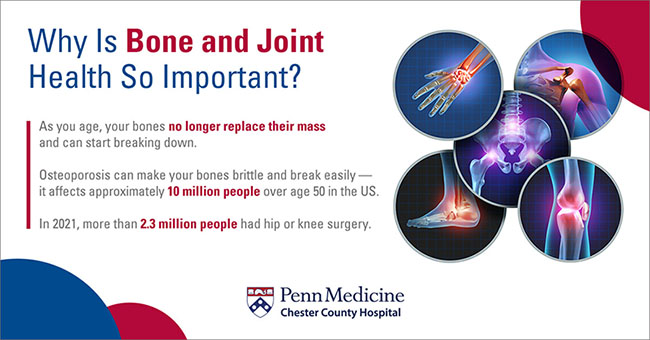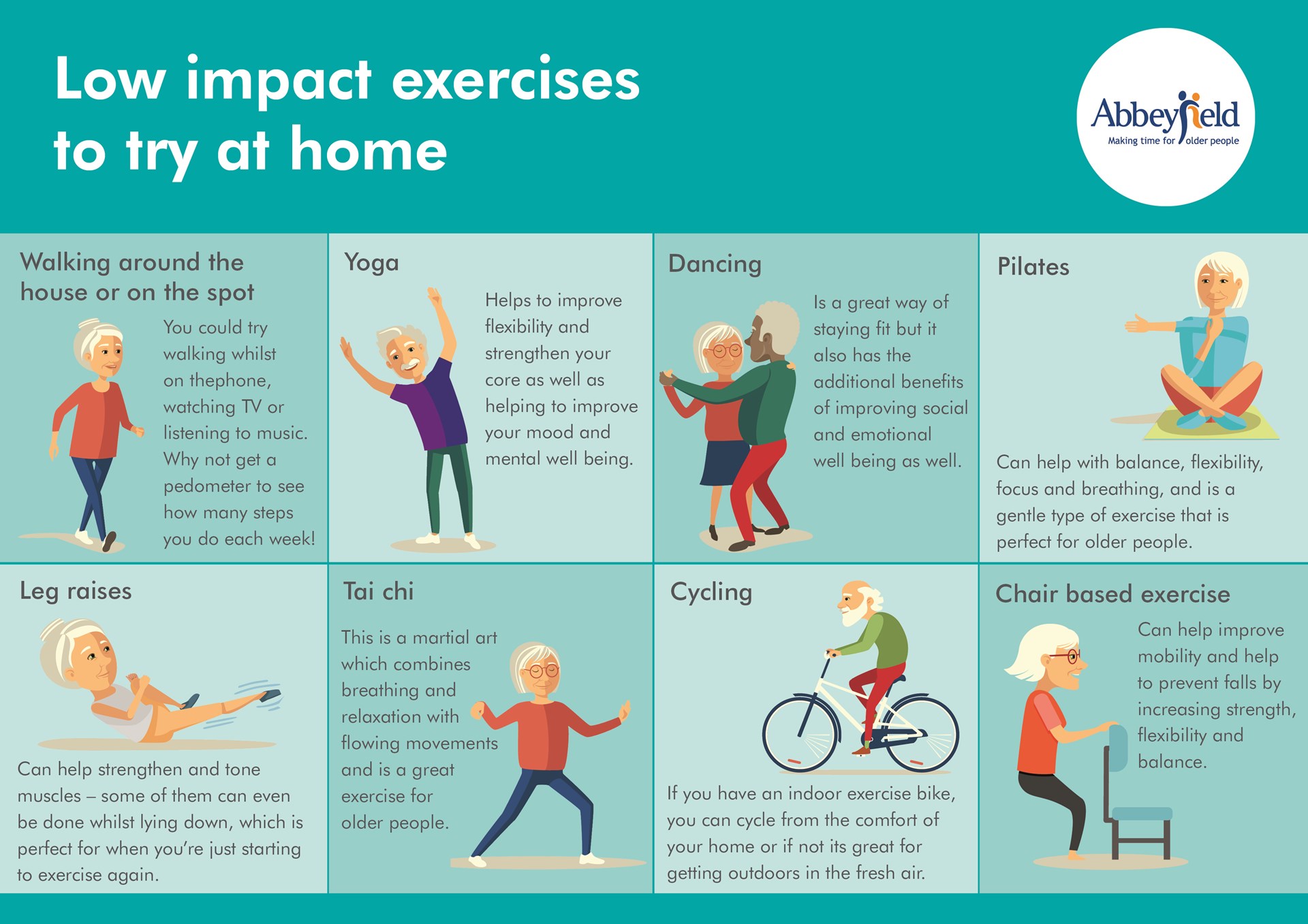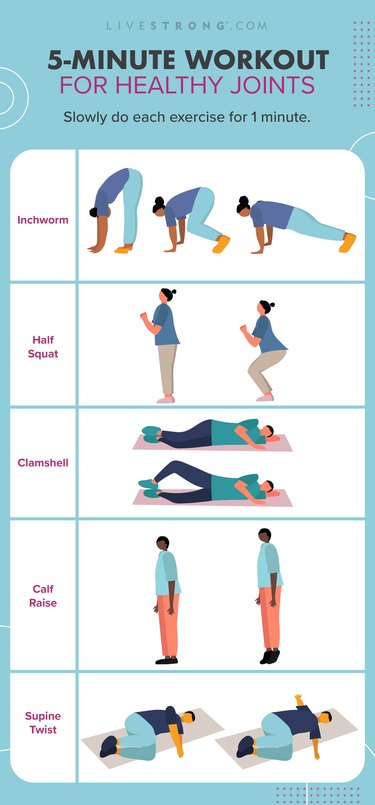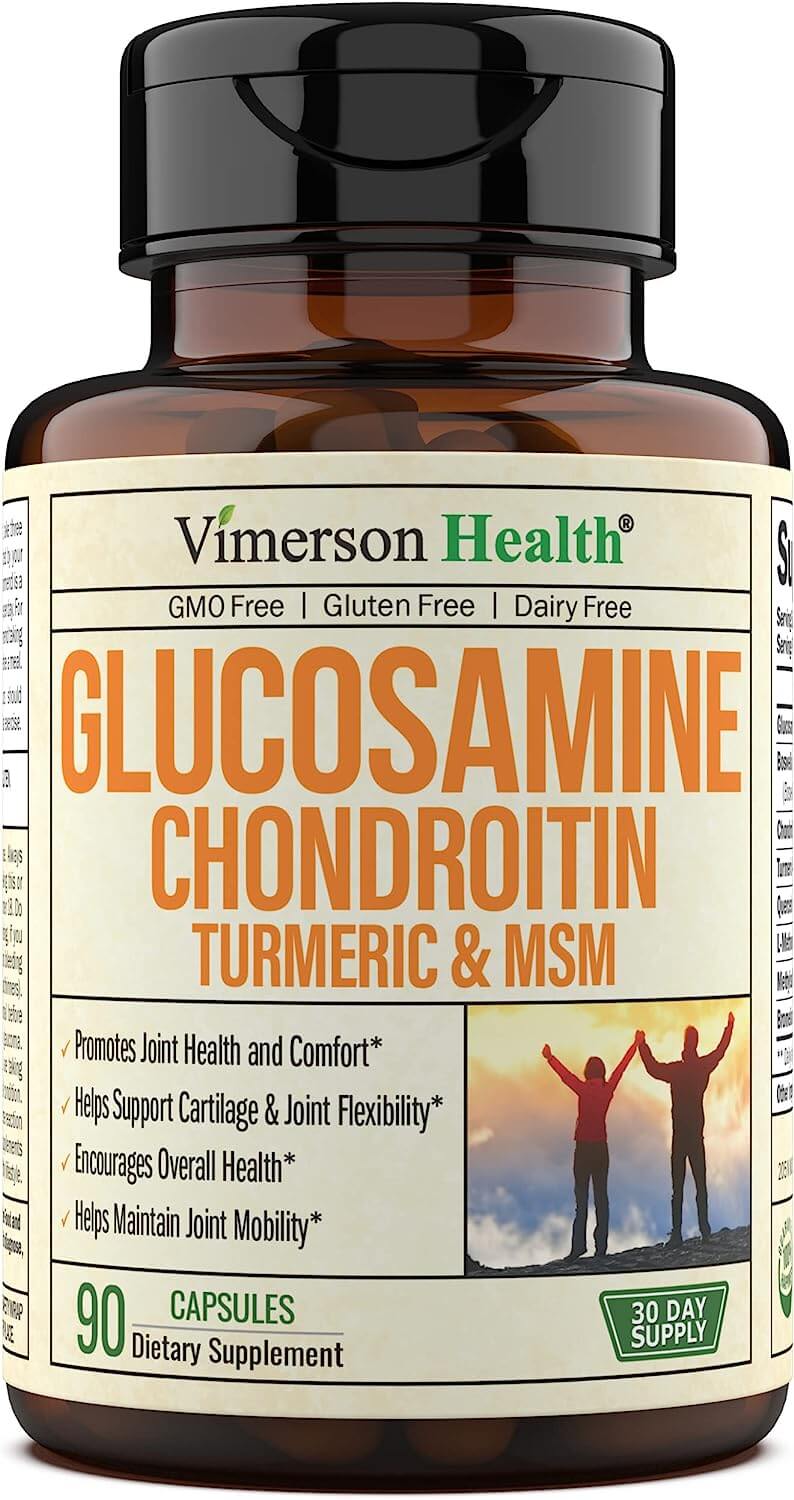How to Improve Your Joint Health: Tips for Healthy and Mobile Joints
Joints are the body's unsung heroes, facilitating movement and enabling us to perform everyday activities. Yet, joint health often takes a backseat until issues arise. Whether you're looking to maintain your joint health or alleviate discomfort, this blog post provides valuable insights and practical tips for achieving and preserving healthy and mobile joints.
Understanding Joint Health
Joints are remarkable structures in the human body that
facilitate movement and enable us to perform a wide range of activities, from
walking and running to simply picking up a cup of coffee. These connections
between bones are critical for our mobility and overall quality of life. Let's
delve into why healthy joints are so vital:
1. Facilitating Movement: Joints act as hinges or pivots,
allowing bones to move in different directions. Imagine the intricate network
of joints that work together as you walk, run, or even wave your hand. Each
joint plays a unique role in facilitating these movements, making it possible
for us to perform everyday tasks with ease.
2. Maintaining Stability: Joints provide stability to our
skeletal system. They are supported by muscles, tendons, and ligaments that
help keep bones in place. This stability is crucial for maintaining our balance
and preventing injuries during physical activities.
3. Absorbing Shock: Joints act as shock absorbers. When we
engage in high-impact activities like running or jumping, our joints cushion
the impact, protecting our bones from damage. This shock-absorbing function is
essential for preserving the integrity of our skeletal system.
4. Supporting Weight: Joints bear the weight of our bodies.
From the ankles that support our full body weight to the spine that distributes
the load evenly, joints play a vital role in maintaining an upright posture and
allowing us to carry out our daily routines.
Common Joint Diseases as We Age
Unfortunately, as we age, our joints become susceptible to
various diseases and conditions that can affect their function and cause
discomfort. Some of the most common joint diseases include:
1. Osteoarthritis: This is the most prevalent form of
arthritis and often occurs with aging. It results from the breakdown of the
cartilage that cushions the ends of bones in joints. As cartilage deteriorates,
bones can rub against each other, leading to pain and stiffness.
2. Rheumatoid Arthritis: Unlike osteoarthritis, rheumatoid
arthritis is an autoimmune disease that causes the body's immune system to
attack the synovium (the lining of the membranes that surround the joints).
This can lead to joint inflammation, pain, and deformity.
3. Gout: Gout is characterized by the accumulation of uric
acid crystals in joints, most commonly in the big toe. It can result in sudden
and severe joint pain, swelling, and redness.
4. Bursitis: Bursitis occurs when the bursae, small sacs
filled with fluid that cushion and lubricate joints, become inflamed. This can
lead to joint pain and limited range of motion.
5. Tendonitis: Tendonitis is the inflammation of tendons,
which connect muscles to bones. It can cause pain and stiffness in the affected
joint.
6. Osteoporosis: Although it primarily affects bones,
osteoporosis can weaken them to the point where fractures occur more easily,
including fractures of the joints.
While these conditions are more common as we age, it's essential to note that proactive measures, including a healthy lifestyle, regular exercise, and a balanced diet, can help prevent or manage many joint diseases. In the following sections of this blog post, we'll explore these preventive measures in more detail, providing you with valuable insights for maintaining and improving your joint health.
Maintain a Healthy Weight
One of the most effective ways to support joint health is by
maintaining a healthy weight. Excess weight places additional stress on your
joints, particularly those in the knees, hips, and back.
Numerous studies have highlighted the connection between
excess weight and joint stress. The joints in our lower extremities, like the
knees, bear the brunt of this added pressure. For every pound of excess weight,
the force on the knee joints increases by about four pounds during activities
like walking. This excess stress accelerates joint wear and tear, increasing
the risk of conditions like osteoarthritis.
A study published in the journal "Arthritis &
Rheumatism" found that overweight and obese individuals who lost just 5%
of their body weight experienced significant improvements in knee joint
function and reduced pain. Another study in the "Annals of the Rheumatic
Diseases" reported that weight loss reduced the risk of developing knee
osteoarthritis.
Defining a Healthy Weight
Determining what constitutes a healthy weight involves
considering various factors, including body mass index (BMI), body composition,
and individual health goals.
BMI: A BMI between 18.5 and 24.9 is often considered a
healthy range. However, it's important to remember that BMI doesn't account for
muscle mass or body composition. Some individuals with a higher BMI may still
be healthy and fit.
Body Composition: Assessing body fat percentage and muscle
mass can provide a more accurate picture of health. Ideally, a healthy weight
should include a balanced proportion of lean muscle mass and a reasonable
amount of body fat.
Consulting a Healthcare Provider: To determine your ideal
weight and set realistic goals, consult with a healthcare provider or
registered dietitian. They can consider your individual health needs and help
you create a personalized plan.
Incorporating a combination of a balanced diet and regular
exercise into your lifestyle can help you achieve and maintain a healthy
weight. By doing so, you not only relieve joint stress but also reduce the risk
of joint-related conditions and improve your overall quality of life.
Stay Active and Exercise Regularly
Regular physical activity is a cornerstone of joint health.
Exercise not only strengthens the muscles around your joints but also offers a
range of benefits for your overall well-being. Here's a deeper look into the
research-backed advantages of exercise for joint health and the types of
exercises that are effective.
Research Evidence on exercise and its impact on joint Health
has found the following benefits:
Pain Reduction: Studies published in the "Journal of
Clinical Rheumatology" and the "Journal of Orthopaedic & Sports
Physical Therapy" have shown that regular exercise can reduce joint pain
and improve joint function in individuals with osteoarthritis.
Improved Joint Function: Research in the "Journal of
Applied Physiology" has demonstrated that exercise can enhance joint
flexibility and range of motion. This is particularly important for individuals
with conditions like rheumatoid arthritis, where joint mobility may be
compromised.
Strengthens Muscles: Strong muscles provide support to your
joints, reducing the load they have to bear. Research in the "Journal of
Arthritis & Rheumatism" has highlighted the importance of muscle
strength in protecting joint health.
Effective Types of Exercises for Joint Health
Low-Impact Aerobics: Activities like swimming, water
aerobics, and cycling are gentle on the joints while providing cardiovascular
benefits. They improve joint mobility and reduce the risk of injury.
Walking: Walking is an excellent low-impact exercise that
can be easily incorporated into your daily routine. It supports joint function,
particularly in the knees and hips.
Tai Chi: This mind-body exercise combines slow, flowing
movements with deep breathing and relaxation. Research in the "Journal of
Rheumatology" has shown that Tai Chi can improve balance, reduce pain, and
enhance joint function in individuals with osteoarthritis.
Yoga: Yoga promotes joint flexibility and strength. It can also help reduce joint pain and stiffness. A study in the "Journal of Alternative and Complementary Medicine" found that yoga improved joint function in participants with rheumatoid arthritis.
In addition to aerobic-type activities, strengthening exercises to maintain joint strength and stability are beneficial as well.
Leg Lifts: Leg lifts target the muscles around the hips and knees, providing stability and support for these joints. Leg lifts can be performed while lying on your side, lifting one leg at a time.
Wall Squats: Wall squats strengthen the quadriceps muscles,
which are essential for knee stability. Stand with your back against a wall and
lower yourself into a seated position, then return to a standing position.
Resistance Band Exercises: Resistance bands are versatile
tools for strengthening the muscles around your joints. They can be used for
leg lifts, knee extensions, and hip abductions.
Planks: Planks engage the core muscles, which play a crucial
role in maintaining stability throughout the body, including the spine and
hips.
Incorporating a combination of these exercises into your
fitness routine can help support joint health and reduce the risk of
joint-related conditions. Injury prevention is crucial for joint health. Use
proper techniques during physical activities to avoid joint strain. When
necessary, wear protective gear like knee pads or wrist supports. Listen to
your body; if you experience joint pain, rest and seek medical advice.
Remember to start slowly, gradually increase the intensity, and consult with a fitness professional if you're new to exercise or have specific concerns about your joints.
Eat a Joint-Friendly Diet
Nutrition plays a pivotal role in joint health. A
well-balanced diet rich in specific nutrients can help reduce inflammation,
strengthen joint tissues, and alleviate joint pain. Here's a deeper dive into
planning a joint-friendly diet and some research-backed food recommendations:
Key Nutrients for Joint Health
Omega-3 Fatty Acids: Omega-3 fatty acids, found in fatty
fish like salmon, mackerel, and sardines, have potent anti-inflammatory
properties. Research in the "American Journal of Clinical Nutrition"
suggests that omega-3s can help reduce joint pain and stiffness in individuals
with rheumatoid arthritis.
Antioxidants: Antioxidants like vitamins C and E can combat
oxidative stress and inflammation in the joints. Foods rich in antioxidants
include citrus fruits, berries, nuts, and seeds.
Vitamin D: Vitamin D is essential for calcium absorption,
which supports bone and joint health. Fatty fish, fortified dairy products, and
sunlight exposure are sources of vitamin D.
Calcium: Calcium is vital for maintaining strong bones, and
strong bones are the foundation of healthy joints. Dairy products, leafy
greens, and fortified plant-based milk are good sources of calcium.
Turmeric and Ginger: These spices have natural
anti-inflammatory properties. Curcumin, found in turmeric, has shown promise in
reducing joint pain and stiffness in studies published in the "Journal of
Medicinal Food" and "Arthritis Research & Therapy."
Fatty Fish: Salmon, mackerel, and sardines are excellent
sources of omega-3 fatty acids. Aim to incorporate these into your diet at
least twice a week.
Berries: Blueberries, strawberries, and raspberries are rich
in antioxidants and can help combat inflammation.
Nuts and Seeds: Almonds, walnuts, flaxseeds, and chia seeds
provide healthy fats and antioxidants.
Citrus Fruits: Oranges, grapefruits, and lemons are high in
vitamin C, which supports collagen production in joint tissues.
Leafy Greens: Spinach, kale, and collard greens are rich in
calcium and vitamin K, which are crucial for bone health.
Turmeric and Ginger: Incorporate these spices into your
cooking whenever possible, or consider turmeric or ginger tea.
Dairy or Dairy Alternatives: Opt for low-fat dairy or fortified plant-based milk to ensure an adequate intake of calcium and vitamin D.
Dietary Tips for Joint Health
Maintain a Balanced Diet: Strive for a well-rounded diet
that includes a variety of nutrient-rich foods.
Hydration: Staying well-hydrated is essential for joint
lubrication. Water is the best choice for hydration.
Moderation: While certain foods can support joint health,
it's also important to consume others in moderation. Limit foods high in
saturated fats and refined sugars, as they may contribute to inflammation.
Planning your meals with these joint-friendly foods and
nutrients in mind can have a positive impact on your joint health. Consider
consulting with a registered dietitian for personalized dietary guidance
tailored to your specific needs and preferences.
Joint Supplements and Medications
In addition to a balanced diet, some individuals may benefit
from supplements and medications specifically designed to support joint health.
Here are common supplements and medications, along with their documented
benefits:
1. Glucosamine and Chondroitin: The glucosamine and
chondroitin are often taken together as supplements. Research published in the
"Journal of the American Medical Association" suggests that they may
help relieve symptoms of osteoarthritis, such as joint pain and stiffness.
These compounds are believed to promote cartilage health.
2. Omega-3 Fatty Acids: Omega-3 fatty acids, commonly found in fish oil supplements, have anti-inflammatory properties. Studies in the "Journal of Nutrition" and "Arthritis & Rheumatology" have shown that omega-3s can reduce joint pain and improve joint function in individuals with rheumatoid arthritis and osteoarthritis.
3. Turmeric and Curcumin: Turmeric and its active compound, curcumin, have potent anti-inflammatory effects. Research in the "Journal of Medicinal Food" and "Arthritis Research & Therapy" indicates that curcumin supplementation can reduce joint pain and stiffness in individuals with osteoarthritis and rheumatoid arthritis.
4. Boswellia Serrata:
Boswellia serrata, also known as Indian frankincense, is an herbal
supplement with anti-inflammatory properties. Studies in the "Indian
Journal of Pharmaceutical Sciences" and "Phytomedicine" suggest
that it may reduce joint pain and improve joint function in individuals with
osteoarthritis and inflammatory joint conditions.
5. Prescription Medications: In some cases, healthcare providers may prescribe medications to manage joint pain and inflammation. Nonsteroidal anti-inflammatory drugs (NSAIDs) like ibuprofen and prescription NSAIDs can provide relief from joint pain and reduce inflammation. Disease-modifying antirheumatic drugs (DMARDs) may be prescribed for individuals with autoimmune joint diseases like rheumatoid arthritis.
6. Corticosteroid Injections: Injections can provide quick relief from joint pain and inflammation. They are commonly used for conditions like osteoarthritis and rheumatoid arthritis. However, they are typically used sparingly due to potential side effects.
It's important to note that while supplements and medications can offer relief, they should be used under the guidance of a healthcare provider. Discuss any potential supplements or medications with your healthcare team to ensure they are safe and suitable for your specific condition.
Incorporating these joint supplements and medications into
your joint health management plan, alongside other lifestyle changes like
exercise and a joint-friendly diet, can contribute to improved joint comfort
and overall well-being. Always consult with your healthcare provider before
starting any new supplement or medication regimen.
Conclusion
Healthy and mobile joints are the key to an active and
pain-free life. By incorporating these tips into your daily routine, you can
improve and maintain joint health. Remember, consistency is key, and seeking
professional advice can help ensure your approach is tailored to your unique
needs. Invest in your joint health today for a vibrant and mobile future!












:max_bytes(150000):strip_icc()/are-cortisone-injections-bad-for-you-2549575-c6299ab4e1574516ad77fa5040a522d6.png)

Comments
Post a Comment